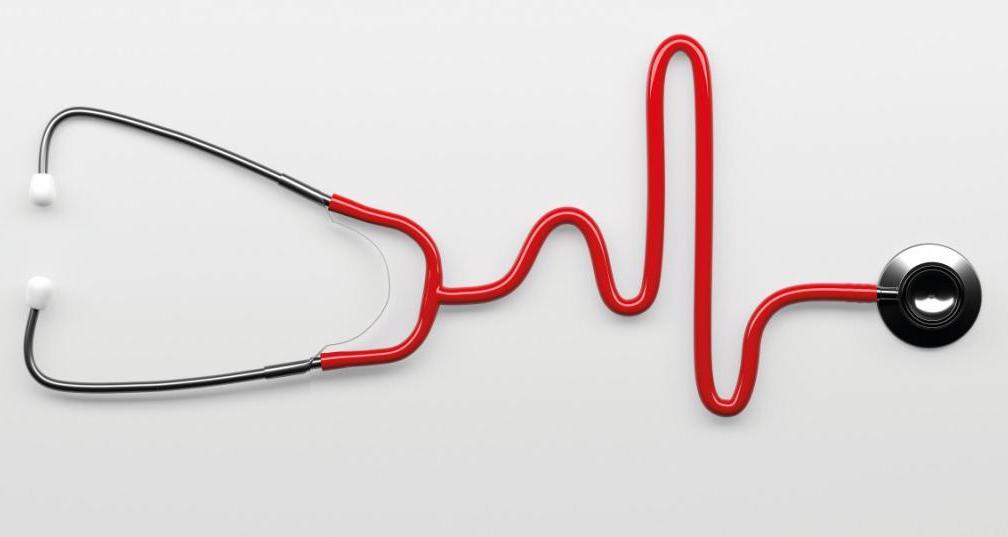Here’s a scary statistic – around 5.5 million people in England have undiagnosed high blood pressure, which is projected to affect over 1.5 billion people worldwide by 2025. Typically speaking, as you age blood pressure rises. In fact, up to 80 percent of people over 65 have measurable high blood pressure. So, what exactly is blood pressure and how can you control it? Blood pressure is the term used to describe the strength with which your blood pushes on the sides of your arteries as it’s pumped around your body and it’s measured by a device called a sphygmomanometer. Don’t let the name put you off though, as you will recognise this as the inflatable rubber cuff that slips around your arm and gradually tightens as the pressure increases. “Blood pressure is recorded as two numbers,” explains Abbas Kanani, pharmacist at Chemist Click (chemistclick.co.uk). “The top number is known as systolic pressure and is the force at which your heart pumps blood around your body. The bottom number, known as diastolic pressure, is the pressure in the arteries when the heart rests in between beats. A normal blood pressure is anywhere between 90/60 and 120/80.” Getting the balance spot on, however, is the difficult part. A reading that is too high or too low can lead to health implications. It’s also not uncommon for your blood pressure to vary throughout differing times of the day, as Dr Sarah Brewer points out: “Your blood pressure naturally changes throughout the day, in response to your emotions and level of activity. It also tends to go up during stressful situations.” But a blood pressure reading that is consistently too high or too low is a cause for concern.
What is high blood pressure?
“Having high blood pressure increases the workload of the heart and blood vessels,” says Abbas. “The force at which blood is pumped around the body can damage the arteries, causing tears in their walls. Fatty deposits build up in these tears and the arteries have had to become stronger to withstand the high pressure. This makes it tougher for blood to move around the body. The heart needs to work harder to pump blood, weakening the muscles of the heart. This can cause a heart attack. If blood is clogged up in the artery, it can also be prevented from transporting oxygen to the brain. This is the cause of stroke.” Consistently having high blood pressure is known as hypertension, which is a long-term medical condition in which the blood pressure in the arteries is persistently elevated. “When blood is forced through your system at high pressure, your arteries are damaged which can lead to hardening and furring up, so that arteries narrow and blood flow is constricted,” adds Dr Sarah. “Some arteries can also become over-stretched to increase the risk of bursting. As a result, having untreated high blood pressure increases your risk of several life-altering complications, including angina (heart pain), heart attacks, heart failure, strokes, kidney failure and even a loss of sight.” The World Health Organisation estimates that treating high blood pressure to a target of below 140/80mmHg can reduce the risk of stroke by 40 percent and the risk of a heart attack by 16 percent.
What is low blood pressure?
With so much negative press surrounding a high reading, it can be easy to forget that low blood pressure is also bad for your health. “Hypotension (not to be confused with hypertension at the other end of the scale) is diagnosed when your blood pressure falls below 90/60mmgHg,” explains Dr Sarah. “Some of the signs and symptoms of hypotension include feeling light-headed or dizzy, with cold, clammy skin, a dimming or blurring of vision, buzzing in the ears and even fainting. Other symptoms of low blood pressure are less obvious and nonspecific such as tiredness, headaches, anxiety, depression and poor concentration which, together, are sometimes known as hypotension syndrome. If you think you could have low blood pressure, see your doctor.” Although low blood pressure isn’t as dangerous as a high reading, it’s still important to keep an eye on it.
Easy ways to adjust your blood pressure today:
To put it simply, the best way to maintain a normal blood pressure is to lead a healthier lifestyle. There are many things you can do to help decrease the risk of problems, but here are a few changes you can make today.
1. Limit salt
“One of the key recommendations is to reduce your salt intake,” advises Sotiris Antoniou, consultant pharmacist and Royal Pharmaceutical Society spokesman. “This is not just the salt that you add at the table, but also hidden salt, so do look on the label on containers and consider buying canned products in water as opposed to brine.”
2. Get your five-a-day
“As with any healthier lifestyle, eating more fruit and vegetables is another recommendation for maintaining a healthy reading as they have been shown to lower blood pressure. Sticking to the five-a-day rule is an easy way to get your recommended daily amount,” says Sotiris. “Having a healthier diet will also help you to keep to a healthy weight.”
3. Hit the gym
“Exercise helps reduce your blood pressure, with the recommendation of being moderately active for 30 minutes five times a week,” says Sotiris. “This is a level of activity where you would find it difficult to have a conversation at the same time as moving.”
4. Up your magnesium
“Magnesium helps to relax arteries and reduce arterial spasm, as well as lowering blood pressure and protecting against calcification of the coronary arteries,” says Dr Sarah. “Data from 19 studies show that people with the highest dietary magnesium intake are 15 percent less likely to experience a heart attack or stroke than those with the lowest intakes. When circulating magnesium levels were checked, those with the lowest levels were 33 percent more likely to have a heart attack or stroke than those with the lowest levels. Food sources of magnesium include nuts, seeds, dark green leaves, beans, fish, wholegrains – and dark chocolate.”






















